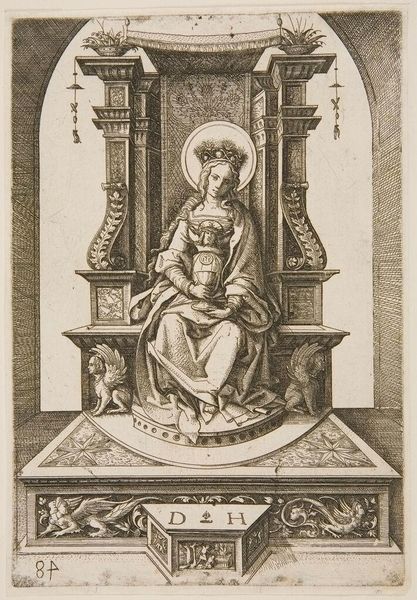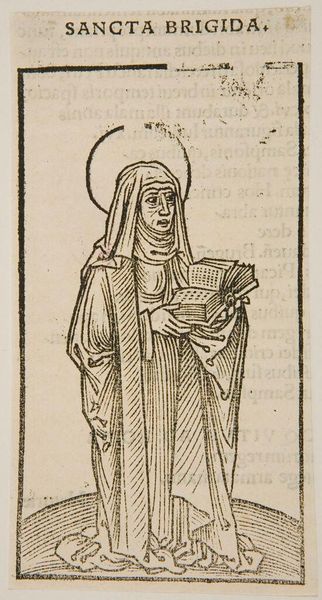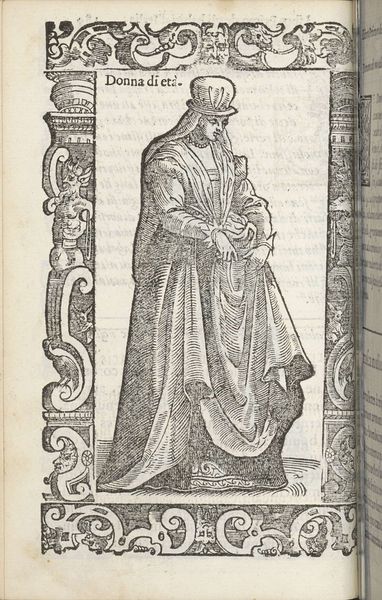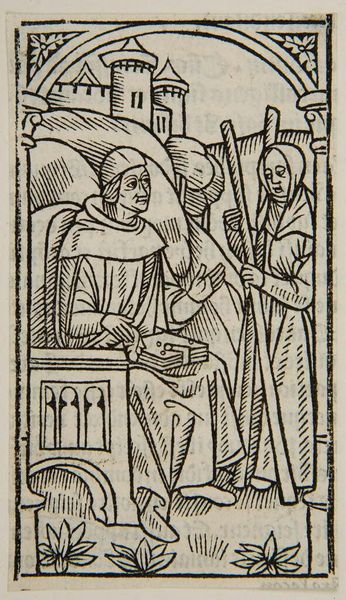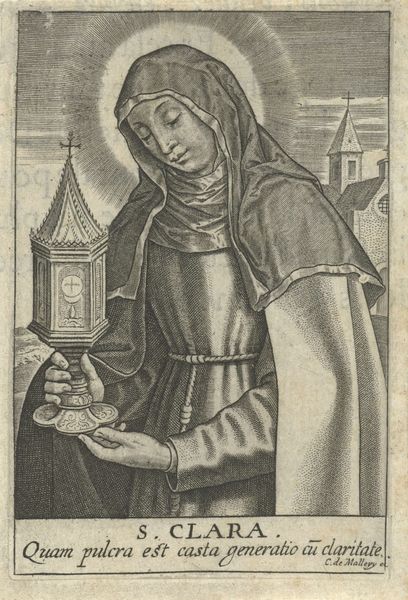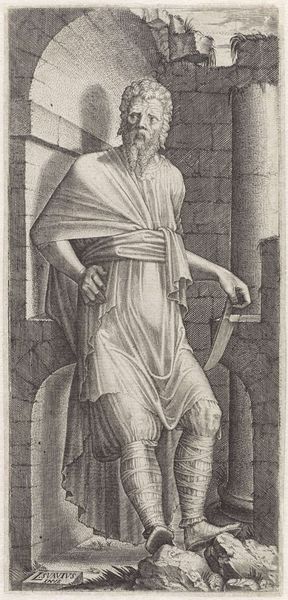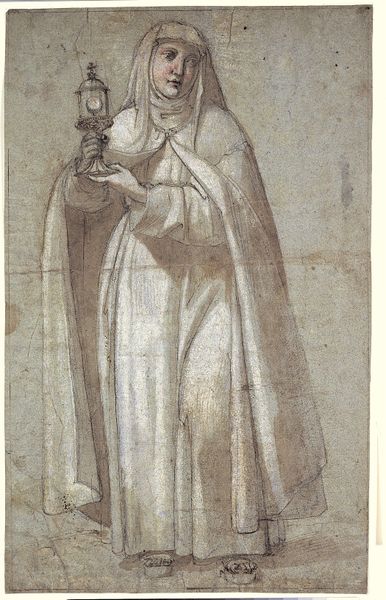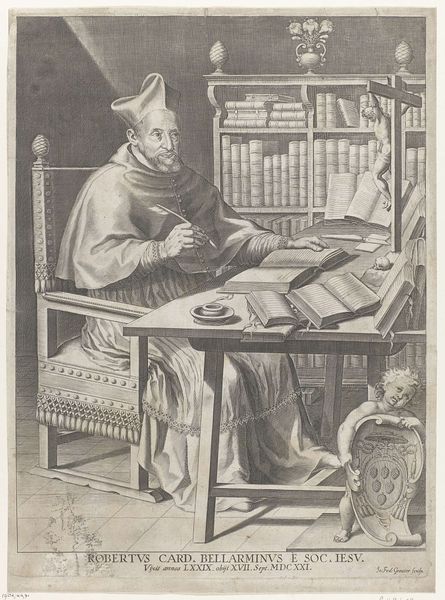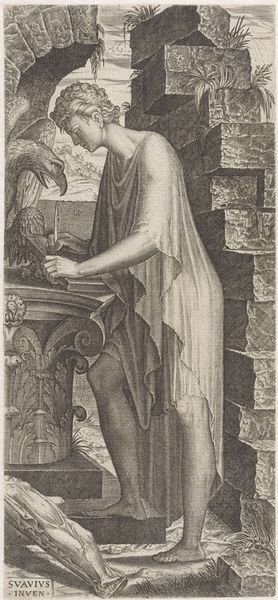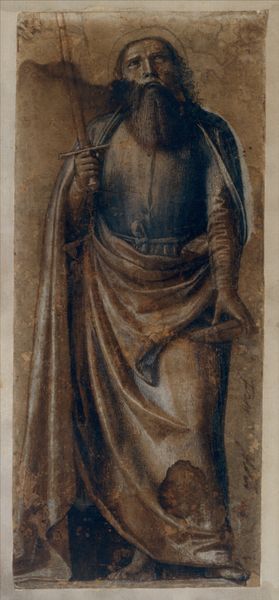
fresco
#
portrait
#
allegories
#
medieval
#
allegory
#
fresco
#
history-painting
#
italian-renaissance
Copyright: Public domain
Curator: Here we have Giotto’s “Prudence,” a fresco dating back to 1306, found within the Scrovegni Chapel in Padua. Editor: My first impression is the subdued palette; the muted tones lend a sense of introspection to this figure. Note the architectural quality of her throne, almost cubist in its simplicity. Curator: It’s part of a larger series of virtues and vices, all meant to guide the viewer in understanding moral conduct. It is so interesting how it encourages self-reflection. We might interpret Prudence’s act of looking into a mirror as a call to know oneself—to examine one’s own actions and motivations within a spiritual and communal framework. Editor: And that mirror isn’t just for vanity. Semiotically, it represents self-awareness, contemplation. Giotto cleverly uses the mirror as a symbolic device. The subject also holds a compass; which could symbolize rationality, thoughtful measuring, and planning. Notice how Giotto employs foreshortening to suggest depth, a novel technique. Curator: I am struck by the implications of assigning traditionally masculine traits of rationality to a female allegorical figure. This challenges established gender roles while elevating prudence as a universal virtue. Editor: Do you think Giotto’s choice to depict "Prudence" as female impacted its reception? Did this challenge or reinforce societal views on female intelligence and decision-making during the period? The placement of the composition invites analysis; framed and isolated, Prudence is almost placed on display. The artist’s focus on her isolation is striking. Curator: The image also gives insight into how female virtue and knowledge were understood in relation to society, religion and learning in Giotto’s time. Editor: So, after taking a close look at composition, color, and technique, and thinking through its construction, Giotto seems to make a conscious argument to embrace prudence. Curator: Yes. Reflecting on Prudence in the present-day means considering the significance of moral self-assessment to achieving a better world.
Comments
No comments
Be the first to comment and join the conversation on the ultimate creative platform.
